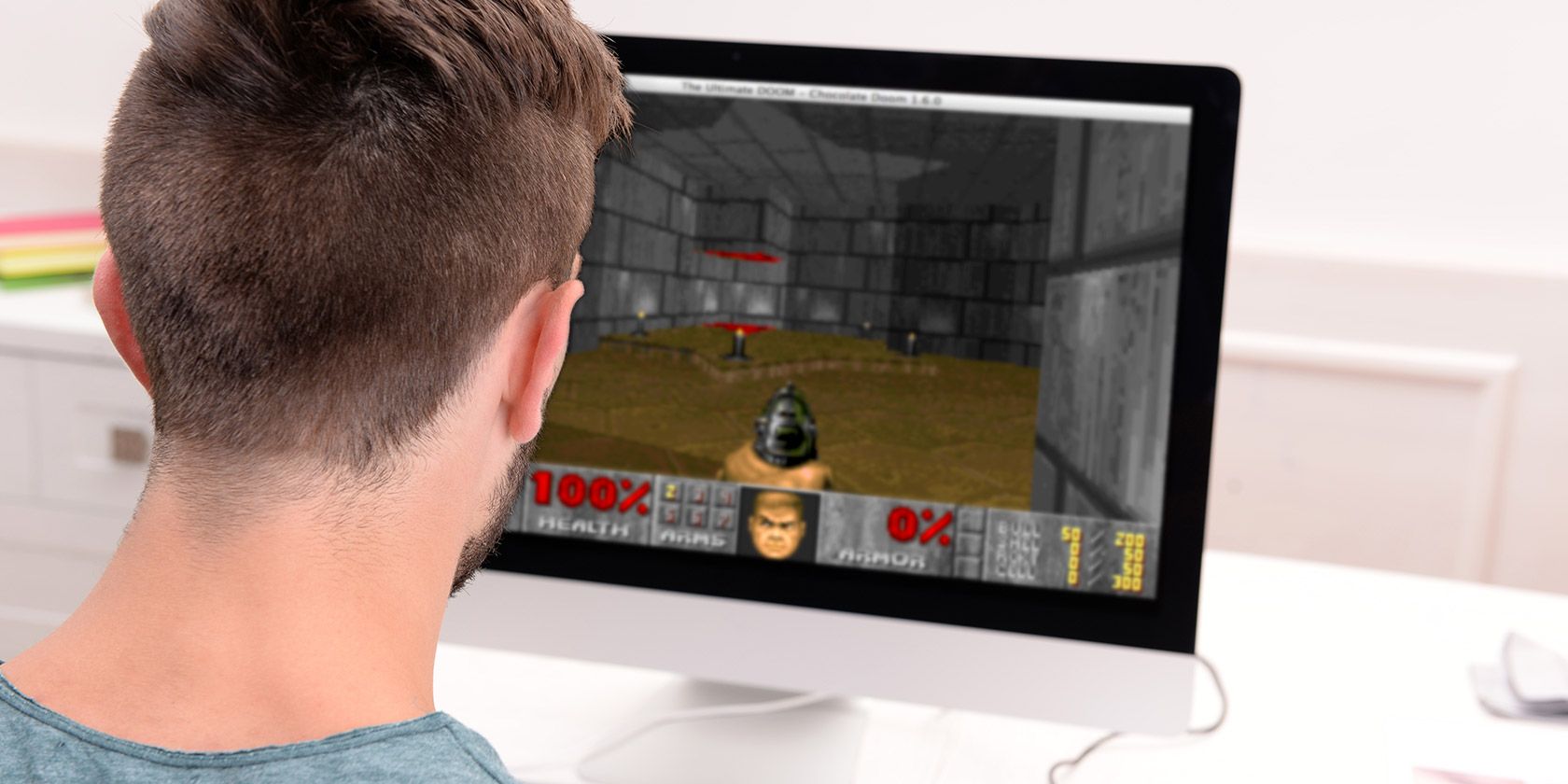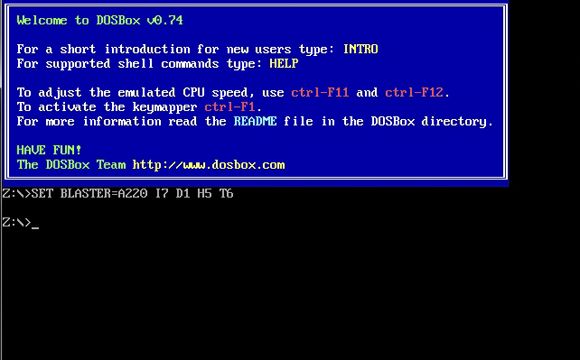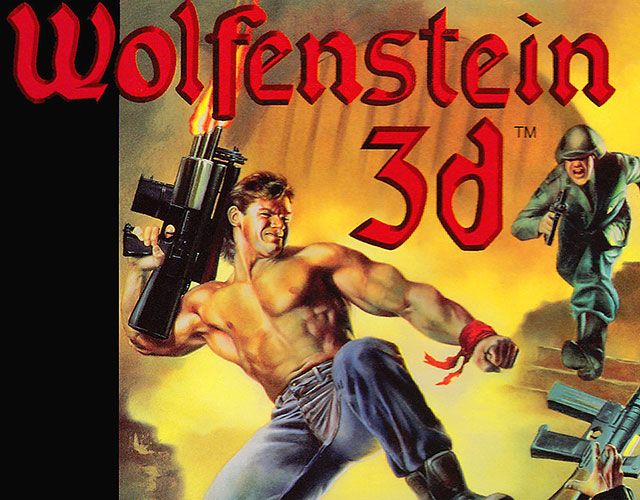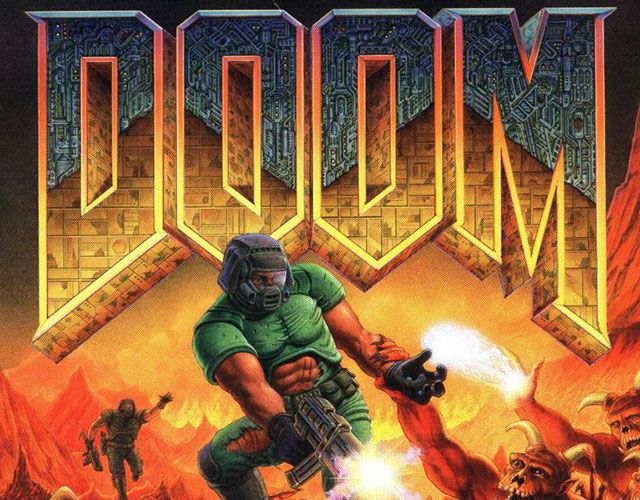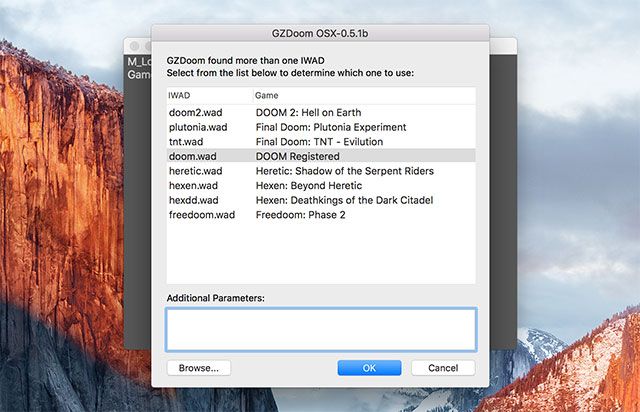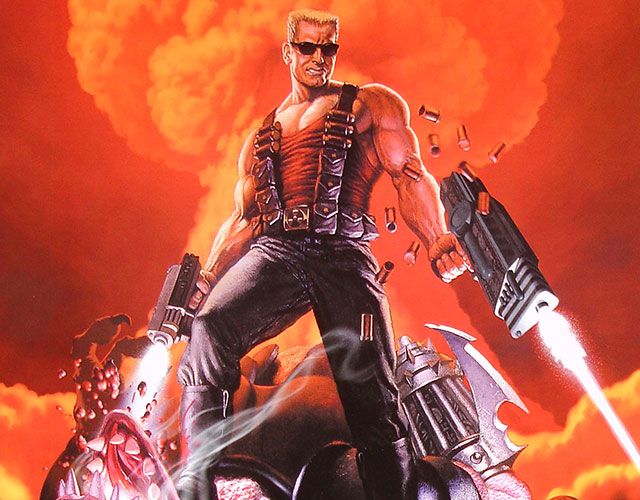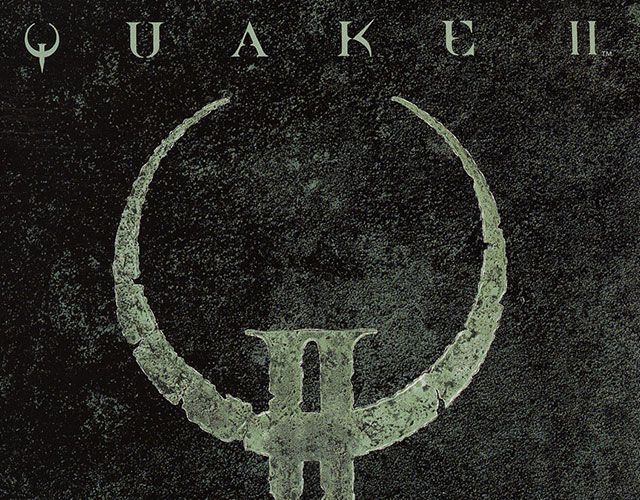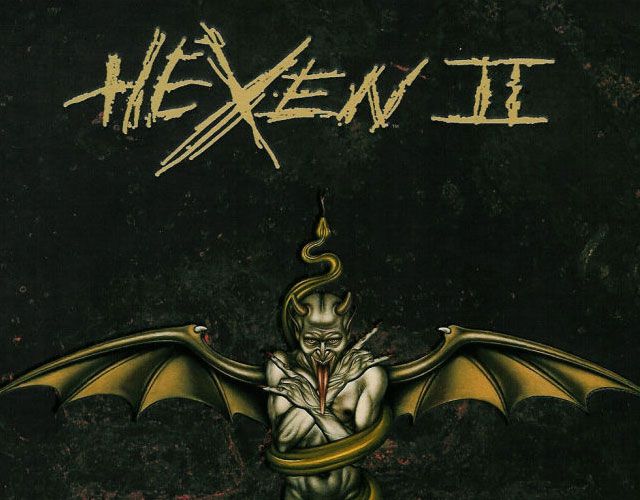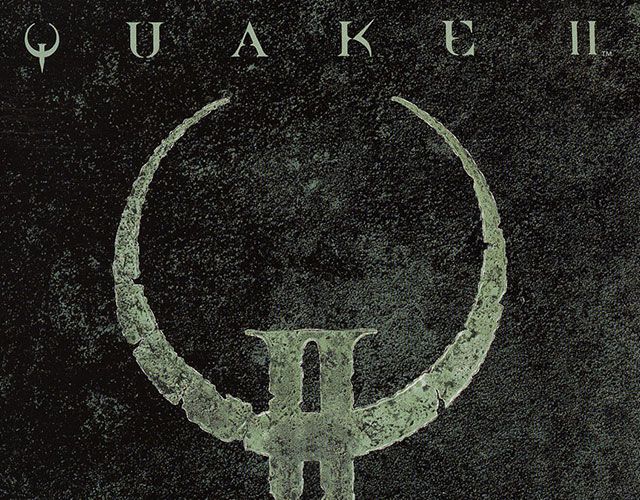Feeling disheartened by a new Doom game that feels like any other first-person shooter? Wish you could go back to 1993 and relive the classics, with a few extra mod cons? Source ports let you do just that.
In a gaming landscape that's dominated by high-end graphics cards, digital distribution and reboots of games that feel nothing like the originals, it's nice to get back to your roots every now and again.
What is a Source Port?
It's not unheard of for a developer to make their wares available to tinkerers free-of-charge, but this doesn't often extend to individual game assets (levels, textures, sounds and so on). Instead developers release the framework on which they built the game, which encourages the community to continue development in a bid to support an ever-changing landscape of operating systems and hardware.
When a game engine is released under an open source license (usually a form of General Public License), third parties are free to pick it up and do what they please with it — provided they don't violate the terms of said license. The newly available source code is commonly used to port the engine to platforms that weren't initially supported by the original release, hence source port.
Here it is, at long last. The DOOM source code is released for your non-profit use. You still need real DOOM data to work with this code. If you don't actually own a real copy of one of the DOOMs, you should still be able to find them at software stores.
In addition to compatibility with a wider range of platforms and hardware, source ports often harness newer hardware to make improvements not that were not possible in the original release. These include improved graphical fidelity, more realistic lighting, texture filtering, support for higher resolutions and widescreen displays, antialiasing, and increased draw distances to name but a few.
Many source ports also allow for more elaborate modifications to the way the game runs, introducing features like mouse-look support in games that previously didn't have it, reload buttons, changes to artificial intelligence, improved non-player characters, and expanded support for sound formats. Many multiplayer scenes have survived as a result, allowing users on modern 64-bit platforms to keep fragging 20 years later.
By now you might be thinking "why can't I just use DOSBox to run my favorite old games" — and you're right, you absolutely can! But DOSBox is an emulator, and though it offers a no-fuss faithful rendition of the games you once loved, it foregoes many of the improvements and fixes that have been made to the engines since initial release.
For many games you're going to have to use DOSBox, because the engine source code was never released Mac users can even use Boxer to make the process easier than ever. But where possible, source ports offer improvements over simply emulating an environment on which to run the vanilla game.
How Do I Play?
As engine ports do not include the game assets, you'll often need to provide your own copy of the game data — a good example is Doom, which uses .WAD files to store levels, enemies, and so on. All ports listed in this article come with fairly straight-forward instructions detailing how to get the game running on your particular system.
If you still own copies of the games listed here, you shouldn't feel any pangs of guilt simply by downloading the files you need from an online source. If you don't, you can pick most of these up for a song from Steam or GOG — simply extract the relevant files and you're on your way.
Wolfenstein 3D
Widely celebrated as the game that kickstarted the first-person shooter genre, Wolfenstein 3D made its debut in 1992 amid a sea of controversy and bans in Germany for use of Nazi symbols and an appearance from the Fuhrer himself. The subsequent SNES version was heavily modified, removing both the blood and Hitler's mustache, but today it's one of the most celebrated first-person shooters.
Wolf3D set several precedents, notably the fast pace many came to expect from the genre. It also established the shareware distribution model as a legitimate revenue stream, giving birth to shooters like Doom and Hexen which followed it.
Today you can play the game in your browser over on the official Wolfenstein 3D website. The game was recreated in HTML5 in 2012 as a 20th anniversary celebration, and even includes developer commentary from John Carmack himself.
Though dated, there's no denying that Wolf3D can be improved somewhat using the ECWolf source port. This cross-platform port runs on all major operating systems including Windows, Mac, Linux, and Android, introducing support for modern control schemes, and widescreen and tall-screen (mobile) compatibility.
ECWolf works with Wolfenstein 3D, Spear of Destiny, and Super 3D Noah's Ark — all of which run on the same engine. Best of all the project is still very much alive, and it's the only actively developed Wolfenstein source port I could find.
Enhancements made to the engine have resulted in a slightly different experience to the original, so if you still want to play Wolfenstein 3D in all its grainy glory then you should stick to the DOSBox or browser version.
Doom, Heretic & Hexen
The idTech 1 engine that powered Doom, its sequel, and a few other first-person favorites was initially made available to the public in 1997, and then re-released in 1999. In that time there have been dozens of source ports of the Doom engine, with a focus on single player, multiplayer, graphical enhancement and maintaining a "vanilla" Doom experience on just about every conceivable platform.
In addition to Doom, The Ultimate Doom, Doom II and Final Doom, which see you in the role of a space marine battling hordes of demons from hell, Heretic and its direct sequel Hexen are also well-supported by many projects. Other idTech 1 games include Strife: Quest for the Sigil, Chex Quest, and its sequel.
Single Player: GZDoom / GZDoom for Mac
Based on popular ZDoom source port, GZDoom bundles an OpenGL renderer for improved graphical fidelity over the original. It's the best choice if you want your Doom experience to be as visually impressive as possible, and it includes compatibility with all idTech 1 games to some degree. You don't necessarily have to use the OpenGL renderer, but if you do you'll enjoy 3D floors, dynamic lighting, new skyboxes, true color texture support, and support for replacement models.
GZDoom is compatible with Windows and Linux (see these instructions for Debian-based distributions), with a great Mac port available too. It's still actively developed and maintained.
For Purists: Chocolate Doom
This is a source port that focuses on providing a vanilla experience, recreating Doom and other idTech 1 games as they were in the '90s, though it does include support for modern high resolution screens and aspect ratios. Chocolate Doom improves on the multiplayer support of the original, allowing you to play over the Internet with all the gritty software-rendering appeal of the first game.
Chocolate Doom includes binaries for both Windows and Mac OS X, and includes instructions for building from source on Linux.
Multiplayer: Zandronum with Doomseeker
Though Chocolate Doom does a good job of providing multiplayer support, Zandronum appears to be the go-to multiplayer source port of choice for users who want to frag like it's 1993. Based on ZDoom, Zandronum is the successor to previous fan favorite Skulltag. You can choose between the GZDoom OpenGL renderer or the classic software renderer, mod support, and play many idTech 1 games including Heretic, Hexen, and Strife.
Doomseeker is a cross-platform server browser that works out of the box with Chocolate Doom, Zandronum, and a selection of other source ports. Zandronum supports 64 player multiplayer and works on all major operating systems.
Don't Miss: Brutal Doom
We can't cover Doom source ports without mentioning this mod which lets you relive the carnage like never before. As the name suggests, Brutal Doom turns the volume up to 11 in terms of gore, and alongside an ultraviolent aesthetic introduces new enemy behaviors, lighting, shadows, particle effects, and the ability to kick your enemies heads around like footballs.
The most recent release includes an entire single-player campaign, customizable levels of gore, grenades, and bug fixes over past versions. It's all free, though you'll need the Doom 2 .WAD to make it happen (though you can play Brutal Freedoom if you want).
Check out our past Brutal Doom article for installation instructions, particularly if you're on Mac OS X and having trouble getting the game working (as I was).
Get More Content
In a 1999 Slashdot interview, id Software prodigy John Carmack remarked:
I still remember the first time I saw the original Star Wars DOOM mod. Seeing how someone had put the death star into our game felt so amazingly cool. I was so proud of what had been made possible, and I was completely sure that making games that could serve as a canvas for other people to work on was a valid direction.
Since then, the number of unsolicited third party add-ons has only grown, with Doomworld's archive serving as a comprehensive repository for levels, conversions, multiplayer resources, utilities, and more. If you're a little overwhelmed you might want to start with the Top 100 WADs of all Time.
Duke Nukem 3D
Duke Nukem has to be one of the most controversial franchises of all time, whether it's down to the unashamedly adolescent humor that set the tone for the original game, or the outrageously delayed Daikatana-esque mess that was Duke Nukem Forever. It's been 20 years since the Duke made his three-dimensional debut, and he's still worthy of your attention.
As Dan Whitehead of Eurogamer wrote: "It's a museum piece, not just of how blatantly sexist games used to be, but of how blind to that I was as a young man," while still being one of the most technically impressive examples of '90s first person shooters. There's a lot to love: the level design, a swelling arsenal of weapons, pigs wearing police uniforms, ground-breaking interactive environments, and a ridiculous amount of third-party content.
For Everyone: EDuke32
The daddy of Duke Nukem 3D source ports, EDuke32 works on all three major operating systems and is by far the most advanced source port of Duke Nukem 3D you'll find online today. In addition to being actively maintained, EDuke32 includes support for high resolutions, OpenGL renderers, advanced scripting possibilities for new modifications, new controls, and full support for the (optional) high resolution pack.
There are binaries for Windows, Mac OS X and Linux as well as instructions for building from source on the official wiki. You can even use EDuke32 for multiplayer Dukematches. Come get some.
Get More Content
To make the Duke look even better than ever, the High Resolution Pack is a must. The HRP author has also recently compiled a 20th anniversary add-on compilation comprising of "86 included addons with more than 1.000 SP levels" in one download, so you should probably get on that too.
You can find even more third party content over at the Duke4 Forums including discussions for several ongoing total conversions like AMC:TC, Duke Forces and WGRealms2.
Quake
Only three years after the release of Doom, id Software released Quake in 1996 and though the game was heralded as a successor at the time, both franchises have found their footing among the shooter community for different reasons. While Doom has traditionally focused on a single-player driven experience, Quake embraced multiplayer with both feet — eventually foregoing the single player experience entirely with the release of Quake III: Arena in 1999.
Like Doom, there seem to a be a million-and-one source ports for the original Quake and which one you choose depends on what you're looking for. While we've done our best to sum-up the offerings that will suit most players in this guide, you should take a look at this in-depth article if you want a more thorough analysis of the offerings.
NetQuake or QuakeWorld?
When it comes to multiplayer Quake, you have two options — the original Quake netcode known as NetQuake, and an enhanced version designed to reduce perceived latency and improve the feel known as QuakeWorld. To quote the aforementioned in-depth Quake source port analysis:
In Quake multiplayer as it was first released, the client (the player's computer) would tell the server what it wanted to do, the server would tell the client what happened as a result, and the client would then show those results. This is a straightforward arrangement, but it becomes frustrating when there is a long network delay between client and server. This delay made people observe that movement in the original Quake could feel like "ice skating".
QuakeWorld was a dramatic revision of Quake that incorporated client-side prediction. The client was allowed to immediately show the results of player action; if it happened to be mistaken, the server could correct it later, causing the client to "jump" to comply with the correct state of the world.
On low-latency servers and for LAN gaming, NetQuake will give you no troubles. For serious gaming with players half-way around the world, you'll probably want to use QuakeWorld. As the two technologies are not compatible, I've indicated below what each source port supports.
The All-Rounder: DarkPlaces
Like GZDoom and EDuke32, DarkPlaces applies a certain level of polish to the Quake experience and though this won't be to everyone's liking you can tone it down for an old-school experience if you want. This particular port works well for both single- and multiplayer, and makes some heavy modifications to the original Quake engine which results in improved graphical fidelity; effects like smoke, blood, bubbles, and explosions; better textures and improved lighting; and even support for Half-Life maps among other modding enhancements.
DarkPlaces works on Windows, Mac OS X, Linux, Solaris, FreeBSD, NetBSD, and OpenBSD and supports both NetQuake and QuakeWorld multiplayer.
For Purists: QuakeSpasm
If you're looking for a gritty, vanilla Quake experience that will take you back to the pixellated days of 1996 then QuakeSpasm is one of your best choices. The engine includes bugfixes and general stability improvements and a few additional client variables, but the main focus is on preserving the feel of the original release.
It's compatible with Windows, Mac and Linux and uses NetQuake for multiplayer, as you'd expect.
Multiplayer: ezQuake (QuakeWorld) or ProQuake (NetQuake)
As the name may suggest, ezQuake is a multiplayer-focused client that's designed to make getting online and playing Quake as straightforward as possible. It's the engine of choice for QuakeWorld players, with graphical improvements, a built-in server browser, and a ton of additional multiplayer focused features and options. It's cross-platform, working on Windows, Mac OS X, Linux, and FreeBSD.
If you're looking for classic "skatey" NetQuake online play then you can't do much better than ProQuake. After some stop-start development, it's now the go-to choice for users who want a "pure" multiplayer experience, and it works on all three major operating systems to boot.
Get More Content
QuakeWiki has a good list of Quake mods to peruse, while you'll find lots of downloads available over at Quake Terminus.
Hexen II
Even though Heretic got a sequel in the form of Hexen, id Software released a third game called Hexen II on the id Tech 2 (Quake) engine in 1997. By this point developers had started taking greater steps to modify game engines, which means you won't be able to play Hexen II on any old Quake source port like you can with earlier titles.
Hexen II is a dark fantasy first person shooter that incorporates destructible environments, mounted weapons, character levelling, and both single and multiplayer game modes. Though the game was initially released on Windows, Hexen II's source code was open-sourced in November 2000.
For Everyone: Hammer of Thyrion
Though there have been several attempts to port Hexen II to modern platforms, only this one appears to still be actively maintained and developed. Like other similar source ports, Hammer of Thyrion introduces new features like support for high resolution displays, widescreen support, enhancements to the OpenGL renderer, better textures and filtering, and a wider array of supported audio formats.
The port works on Windows, Mac OS X, Linux, FreeBSD, and a few more obscure platforms. It currently supports Hexen II, the demo, Portal of Praevus mission pack and multiplayer component HexenWorld (which maintains network compatibility with the original Windows version).
Quake II
Just like Quake before it, Quake II took the multiplayer shooter community by storm and though it included a single player experience, online play was arguably the main focus for many players at the time. The game was not designed as a direct sequel to Quake, though it maintained the same general style of gameplay, albeit at a slightly slower pace.
As such, the game doesn't share very much in common with the "original" Quake. id Software initially wanted to use a different name, but were unable to come up with something that didn't infringe on another trademark.
Single Player: Yamagi Quake II
For an unchanged single-player experience, Yamagi Quake II is a great cross-platform solution. The aim of the mod is to emulate the look and feel of the original, though players can choose to use it with high resolution texture packs (like this one) which will make things look better under today's higher resolutions.
The port works on Windows, Mac and Linux with full instructions on how to play included in the readme.
Windows & Linux Users: KM Quake II and Quake II xp
Quake II was originally released on Windows, and Windows users continue to enjoy the most visually-pleasing source ports. KM Quake II is an OpenGL-only port that aims to increase map limits for mappers, and enable additional features to be incorporated into maps like moving surfaces, transparency, and increased audio format support. It runs only on Windows.
Quake II xp is another source port with a focus on graphical fidelity for Windows and Linux. The port adds Doom 3-esque per-pixel lighting and shadows, an advanced decal and particle system, reflective and refractive surfaces, post-processing effects like bloom and depth of field, and a 3D audio engine that supports high quality sound effects.
Multiplayer: Quetoo
Quetoo was formerly known as Quake2World, and it's a standalone completely free-to-play game based on the id Tech 2 engine. It's squarely focused on bringing Quake II's multiplayer experience to modern platforms, and as a result features nothing in the way of a single-player experience. It includes both new maps and faithful Quake II recreations, familiar game modes like deathmatch and rocket arena, and all-original sounds and in-game music.
You don't need any Quake II files to download and play, and the game works on Windows, Mac OS X and Linux with binaries available for Debian distributions.
Get More Content
Most Quake II content is multiplayer-focused, and the original PlanetQuake (no longer available) website still indexes a good deal of it. You may also be interested in a few of the following projects, if you can find a few people to play them with: Action Quake 2, Berserker@Quake2, Rocket Arena 2, and Loki's Minions Capture the Flag.
Other Games
Unfortunately not all of your favorite classic first-person shooters are as well-supported as Doom and Quake. One of 1994's best releases was Apogee Software's Rise of the Triad: The Dark War, a game which used a heavily modified Wolfenstein 3D engine which was open-sourced in 2002.
ROTT fans could just use DOSBox or buy the GOG version, while Windows users can enjoy all the bug fixes and higher resolution support of WINROTT which was designed for Windows XP. If you're on Mac you'll want to use Dr Lex's ROTT for OS X while Linux users can use the Icculus port.
One glaring omission that hasn't been open-sourced is Monolith's Blood from 1997. Though the game used a heavily-modified version of the BUILD engine used for Duke Nukem 3D, the source has never been released. There have been a few convincing attempts at recreating Blood, so check out the Blood wiki if you're interested.
What Are You Waiting For?
If you've never played any of the above, it's never too late. You owe it to yourself to experience Doom, Duke Nukem 3D and Quake at the very least, and thanks to developers and a continuing effort from the community, you can now do so easier than ever before with more features, better graphics, and added features.
What are your favorite '90s shooters? Any preferred source ports? Let us know what you think in the comments, below!
Image Credit: playing computer game by Africa Studio via Shutterstock

